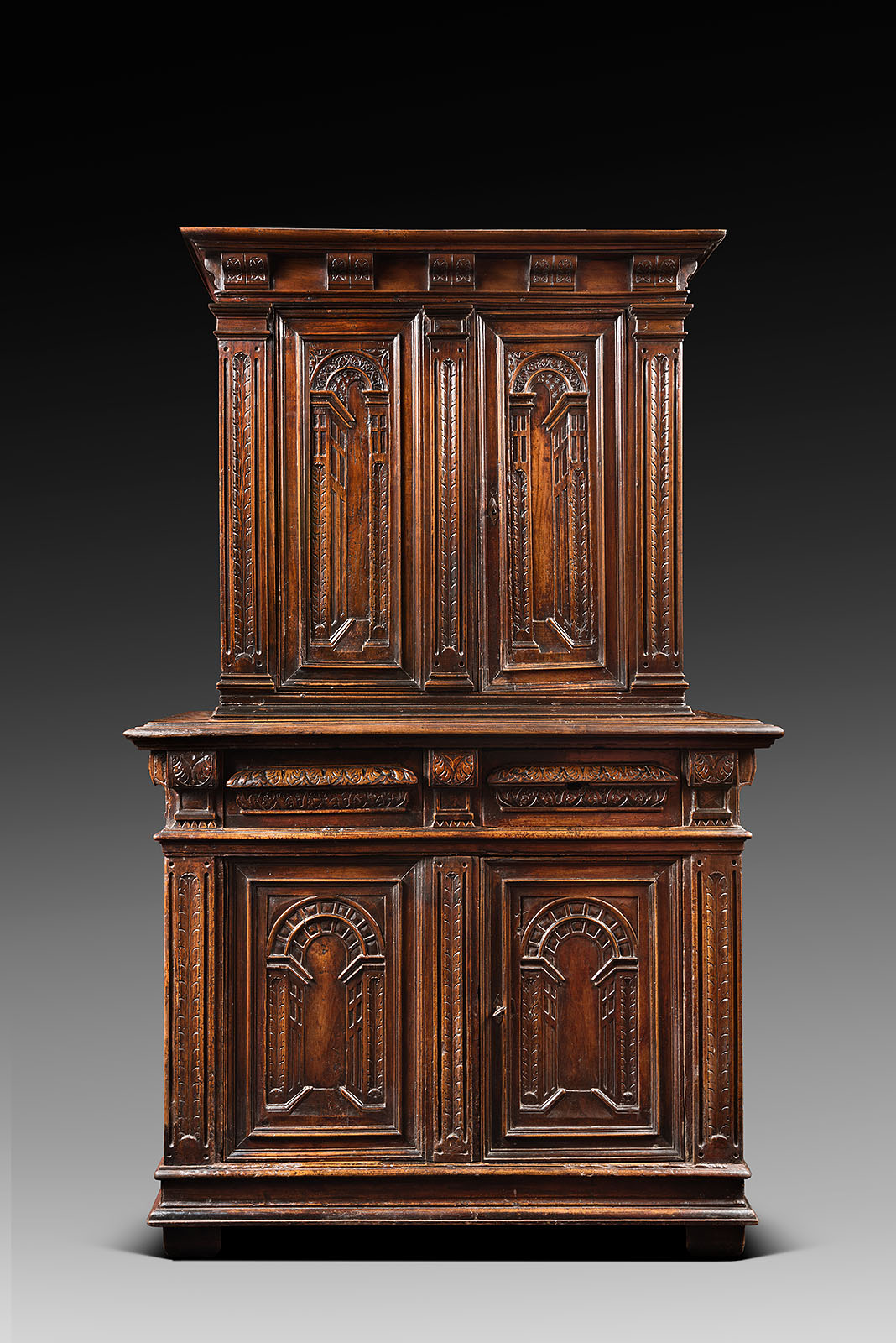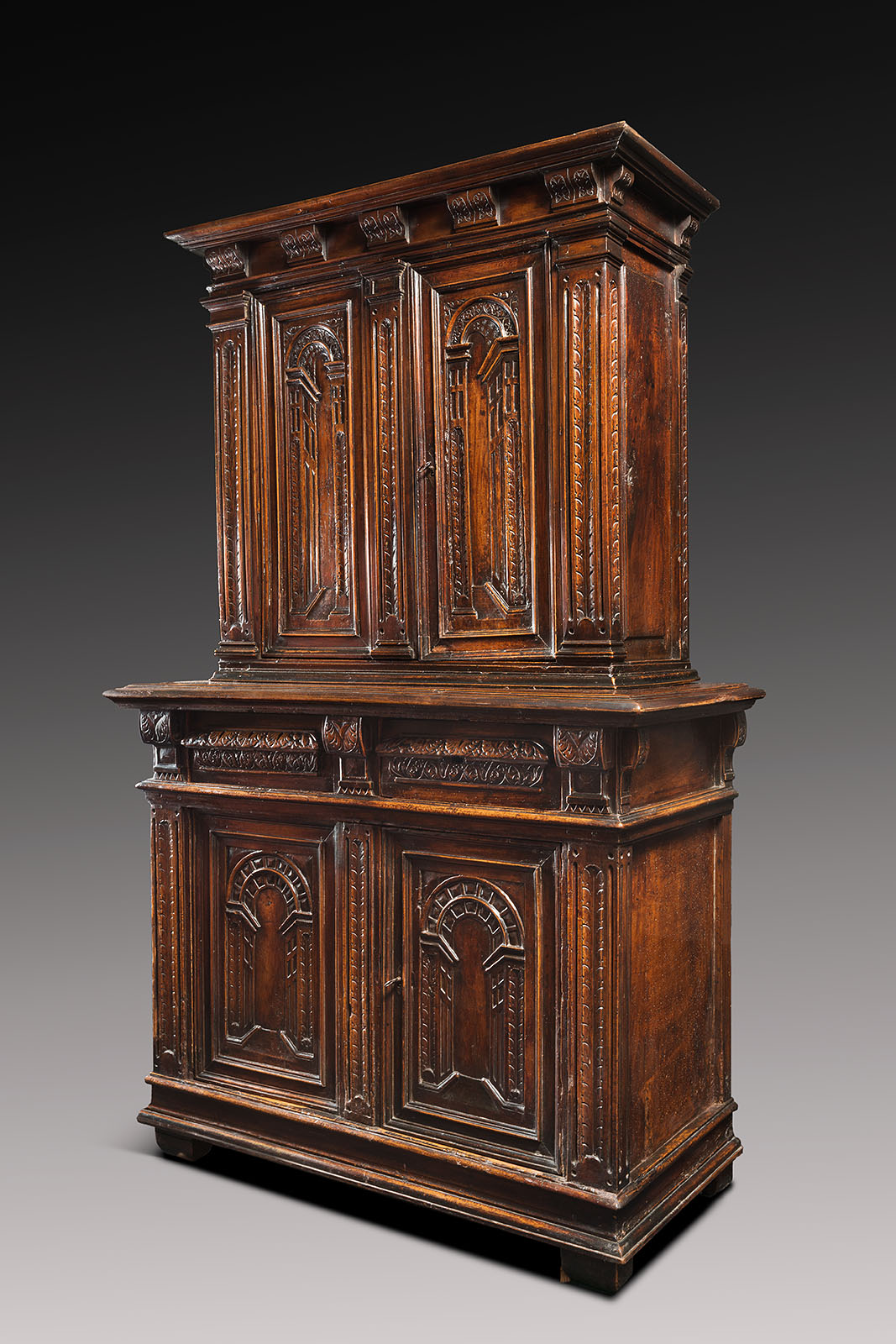Description
This Renaissance Cabinet reveals the great mastery of the Lyon workshops which are at the origin of its realization. Sculptors and wood-carvers worked here in symbiosis to express and translate ultramontane architectural perspectives.
Thanks to the enthusiasm of patrons for paintings of the First Italian Renaissance, rediscovering the mathematical principles and the antic architecture – many Italian artisans and engravers came to the French Court. The city of Lyon was at this period a real place of cultural and commercial convergence.
This cabinet with two recessed parts reveals four panels adorned with trompe l’oeil perspectives sculpted in low-relief, and a richly carved belt concealing two drawers. On a ternary rhythm, this cabinet presents a cornice with a suite of double consoles enriched by carved quill-feathers.
The upper body
The elongated upper body, brings elegance to this piece of furniture. The upper door-leaves present a mirrored architectural decoration composed in the foreground of two lateral pilasters with quill feathers. The windows in the upper part supports a large semicircular arch decorated with sculpted florets. Leaves of acanthus expand to the corners. The perspective gives an effect of depth thanks to a facade with two doric porticos, surmounted by four windows superimposed two by two.
The sobriety of the cabinet composition does not prevent ornamentation. In fact, the belt presents two drawers decorated with large carved acanthus leaves falling in a large gadrooned molding. On both sides, foliated consoles with a denticulated base express a typical aesthetic of the Renaissance.
The lower body
The door-leaves with the frontal perspectives varies from the upper body: a coffered double arched stands on a facade identical to the one of the upper body.
The feather quills and the consoles are typical motifs of the Lyon School of the Renaissance
A cabinet presenting perspectives in ‘trompe l’œil’ but with a more sober structure, is observable in the Mrs. Jacqueline Boccador writings.
The patina, the quality of execution and the originality of the decoration make this Cabinet with perspective a beautiful testimony of the Renaissance Lyonnaise.
Literature
J.BOCCADOR, Le Mobilier français à la Renaissance, Edition d’Art Monelle Hayot, 1988, p.188-192.


